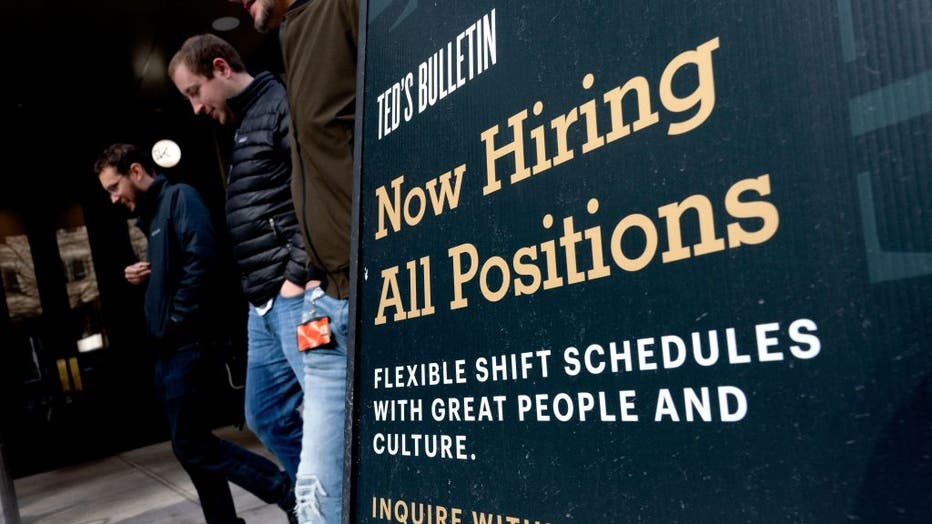April 2022 jobs report: US added 428,000 jobs despite surging inflation
WASHINGTON - America’s employers added 428,000 jobs in April, extending a streak of solid hiring that has defied punishing inflation, chronic supply shortages, the Russian war against Ukraine and much higher borrowing costs.
Friday’s jobs report from the Labor Department showed that last month’s hiring kept the unemployment rate at 3.6%, just above the lowest level in a half-century.
The economy’s hiring gains have been remarkably consistent in the face of the worst inflation in four decades. Employers have added at least 400,000 jobs for 12 straight months.
The latest employment figures did contain a few cautionary notes. The government revised down its estimate of job gains for February and March by a combined 39,000. And the number of people either in the labor force declined in April by 363,000, the first drop since September. Their exit slightly reduced the proportion of Americans who are either working or looking for work from 62.4% to 62.2%.
Still, at a time when worker shortages have left many companies desperate to hire, employers kept handing out pay raises last month. Hourly wages rose 0.3% from March and 5.5% from a year ago.

FILE IMAGE - Pedestrians walk past a Now Hiring sign in Arlington, Virginia, on March 16, 2022. (Photo by STEFANI REYNOLDS/AFP via Getty Images)
Across industries last month, hiring was widespread. Factories added 55,000 jobs, the most since last July. Warehouses and transportation companies added 52,000, restaurants and bars 44,000, health care 41,000, finance 35,000, retailers 29,000 and hotels 22,000. Construction companies, which have been slowed by shortages of labor and supplies, added just 2,000.
Yet it’s unclear how long the jobs boom will continue. The Federal Reserve this week raised its key rate by a half-percentage point — its most aggressive move since 2000 — and signaled further large rate hikes to come. As the Fed’s rate hikes take effect, they will make it increasingly expensive for consumers and businesses to borrow, spend and hire.
RELATED: Postmaster General DeJoy says Americans should get used to 'uncomfortable' rate hikes
In addition, the vast economic aid that the government had been supplying to households has expired. And Russia’s invasion of Ukraine has helped accelerate inflation and clouded the economic outlook. Some economists warn of a growing risk of recession.
For now, the resilience of the job market is particularly striking when set against the backdrop of galloping price increases and rising borrowing costs. This week, the Labor Department provided further evidence that the job market is still booming. It reported that only 1.38 million Americans were collecting traditional unemployment benefits, the fewest since 1970. And it said that employers posted a record-high 11.5 million job openings in March and that layoffs remained well below pre-pandemic levels.
What’s more, the economy now has, on average, two available jobs for every unemployed person. That’s the highest such proportion on record.
And in yet another sign that workers are enjoying unusual leverage in the job market, a record 4.5 million people quit their jobs in March, evidently confident that they could find a better opportunity elsewhere.
Chronic shortages of goods, supplies and workers have contributed to skyrocketing price increases — the highest inflation rate in 40 years. Russia’s invasion of Ukraine in late February dramatically worsened the financial landscape, sending global oil and gas prices skyward and severely clouding the national and global economic picture.
In the meantime, with many industries slowed by labor shortages, companies have been jacking up pay to try to attract job applicants and retain their existing employees. Even so, pay raises haven’t kept pace with the spike in consumer prices.
That’s why the Fed, which most economists say was much too slow to recognize the inflation threat, is now raising rates aggressively. Its goal is a notoriously difficult one: a so-called soft landing.
RELATED: 64% of employees would rather quit their jobs than return to the office full-time, survey finds

